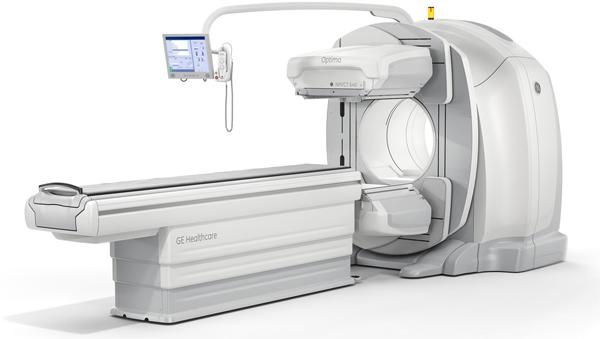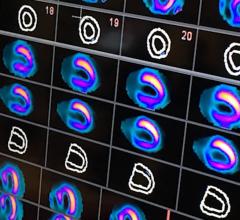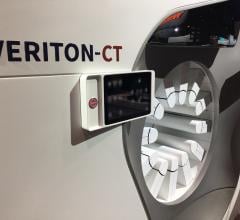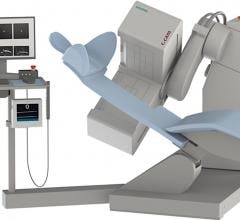
June 15, 2012 — At the 2012 Annual Meeting of the Society of Nuclear Medicine (SNM), GE Healthcare introduced the latest addition to its Nuclear Medicine 600 series with a new performance SPECT/CT (single photon emission computed tomography/computed tomography) system, the Optima NM/CT 640. The new system offers nuclear medicine physicians the optimal balance of image quality, patient dose efficiency and low total cost of ownership.
Based on the 600 series’ SPECT technology found in the Discovery NM 630, this system integrates the general-purpose camera with a newly developed 4-slice CT designed for hybrid rather than standalone CT use. The CT, available in 2.5 mm and 5 mm slice thicknesses to optimize dose and resolution required for particular procedures, offers clinicians confidence with routinely low CT dose at 1-2 mSv for a 40-cm abdomen CT scan.
The Optima NM/CT 640 can be fully upgraded on location from a Discovery NM 630 SPECT-only system, and may be upgraded in the future to a 16-slice Discovery NM/CT 670, expanding not only its clinical capability, but offering the potential for research use.
With its small footprint the Optima NM/CT 640 requires minimal renovation and installation costs. With the benefit of optimized CT power, shielding and control room requirements are often eliminated, saving as much as $100,000 compared to higher CT-powered systems.
“At GE Healthcare, we are dedicated to pushing nuclear medicine to its full potential and investing in its future,” said Nathan Hermony, general manager, nuclear medicine, GE Healthcare. “We’re focused on developing equipment that helps customers address the challenges they are confronted with every day: high image quality, low dose and short exam times. Adding the Optima NM/CT 640 to our portfolio helps us strengthen this position, allows customers to upgrade as their needs expand, and continues to benefit clinicians and their patients.”
Adding all the benefits of the Xeleris Workstation with the Evolution technology to the Optima NM/CT 640 reduces the tradeoffs that are often required between acquisition time, dose and image quality by allowing clinicians to feel confident in their diagnosis, reducing time or injected patient dose by up to 50 percent in most scanning procedures while still maintaining excellent image quality. The Xeleris Workstation — which integrates new and existing nuclear medicine equipment, including legacy GE and non-GE devices — is designed to provide consistent results and enhanced workflow. Xeleris can keep clinicians connected to images and applications from picturing archiving and communications systems (PACS) and PCs with their institution and remotely.
For more information: www.gehealthcare.com


 August 03, 2023
August 03, 2023 








